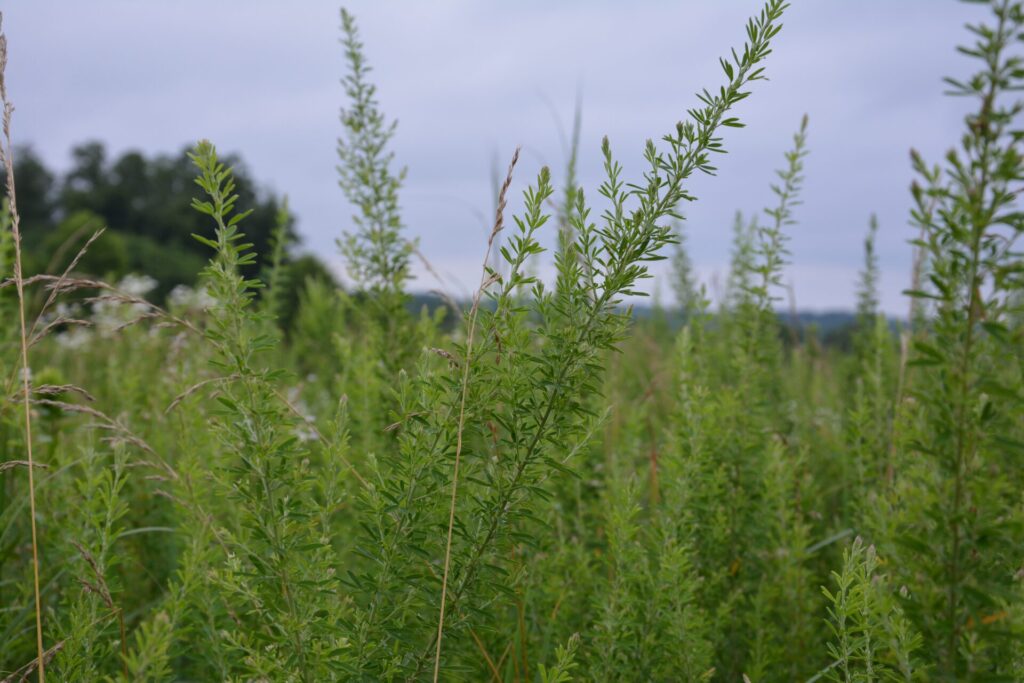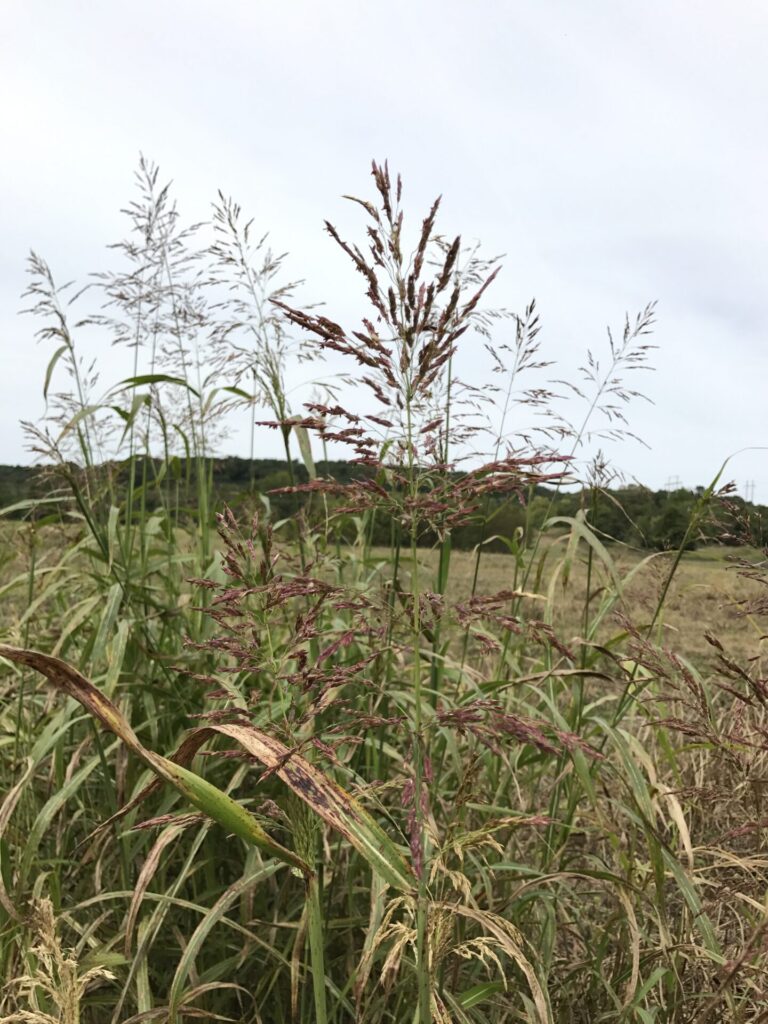This article was originally published by the Department of Forestry and Natural Resources at Purdue University.
The Managing Conservation Plantings series provides landowners and managers with science-based recommendations to combat many of the common issues that arise in native warm-season grass and wildflower conservation plantings. From battling problematic plants like sericea lespedeza (Figure 1) to reducing dense native grass, each publication focuses on a specific challenge and aims to provide practical guidance and best practices to improve native plantings for wildlife.
“These publications were created to provide landowners and managers with up-to-date and science-backed recommendations to address some of the common challenges when managing native plantings,” said Jarred Brooke, Purdue Extension wildlife specialist.
The publications are a result of a partnership between Purdue Extension (FNR and Weed Science), the Indiana Department of Natural Resources Division of Fish and Wildlife, USDA Natural Resources Conservation Service, Pheasants Forever and Quail Forever.
“The ‘Managing Conservation Plantings’ publication series is a much-needed document helping guide those engaged in developing conservation cover through the common challenges, opportunities, and hurdles that coincide with habitat management in Indiana,” said Josh Griffin, Farm Bill Coordinator with the Indiana DNR-Division of Fish and Wildlife. “The documents are dual purpose and guide both landowners and resource professionals in decision-making positions regarding how best to navigate and mitigate best management of conservation cover.”
The nine publications cover:
- Goldenrod Control
- Thinning Native Warm Season Grasses
- Sericea Lespedeza Control
- Woody Encroachment and Woody Invasives
- Johnsongrass Control (Figure 2)
- Reed Canarygrass Control
- Teasel Control (Common and Cut Leaved)
- Controlling Introduced Cool-Season Grasses
- Crownvetch, Sweetclover and Birdsfoot Trefoil Control
Olivia Fry, Southwest Indiana Farm Bill Biologist for Pheasants Forever and Quail Forever, said the publications bring expert conservation assistance and multiple management options to the public.
“These publications address multiple problems that landowners and land managers have been dealing with on their property and demonstrate how conservation organizations/agencies like Purdue Extension, the USDA Natural Resource Conservation Service, Pheasants Forever/Quail Forever and the Indiana DNR Division of Fish & Wildlife are addressing these issues in a collaborative way,” Fry said. “The ‘Managing Conservation Plantings’ series not only gives solutions, but it also gives options. With these documents, landowners can identify the method that is most feasible for them, manage their properties appropriately and feel confident doing so.”

